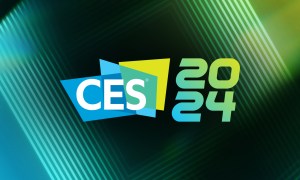
Samsung might not be the first company to produce an ultra short throw (UST) projector that can display a native 8K resolution image, but it claims that its new Premiere 8K is the first of its kind to display that image at a size of 150 diagonal inches. The company revealed the Premiere 8K at CES 2023 but did not immediately provide pricing or announce the projector’s availability.
Until now, 8K UST projectors have been limited to image sizes of 120 inches. And while 120 inches is pretty big, especially when compared to existing 8K TVs, it’s hard to argue that bigger isn’t better, so now buyers can fill even more of their home theaters with 8K goodness.
Samsung has been tight-lipped on just about every other spec you can think of, like brightness, number/kind of ports, support for variable refresh rate (VRR), 120Hz, and
Given that this isn’t Samsung’s first UST projector, we can make some educated guesses about the Premiere 8K from the original Premiere, which is a 4K UST projector.
First, the Premiere has a fixed image size. You can buy it as a 90-inch, 120-inch, or 130-inch model. Despite the Premiere 8K’s impressive 150-inch capability, it wouldn’t surprise us to see Samsung offer it in smaller versions too.
Second, assuming that Samsung hasn’t invented an entirely new set of lenses and optics for the Premiere 8K, it will need to sit at least 415 millimeters (16.3 inches) from the wall. That’s the distance the Premiere needs to do 130-inch images, so the Premiere 8K might need an even greater distance. On the other hand, Samsung has said that it will deliver theater-screen entertainment “while sitting only millimeters from a wall,” so maybe it has developed an entirely new optical system.
As soon as we start to get the full story on this first-of-its-kind 8K UST projector, we’ll let you know.
Samsung has been on a roll at this year’s CES — it has shown a new QD-OLED TV with a 77-inch screen, its smallest microLED TV so far, and a new batch of thinner and brighter flagship Neo QLED TVs.



